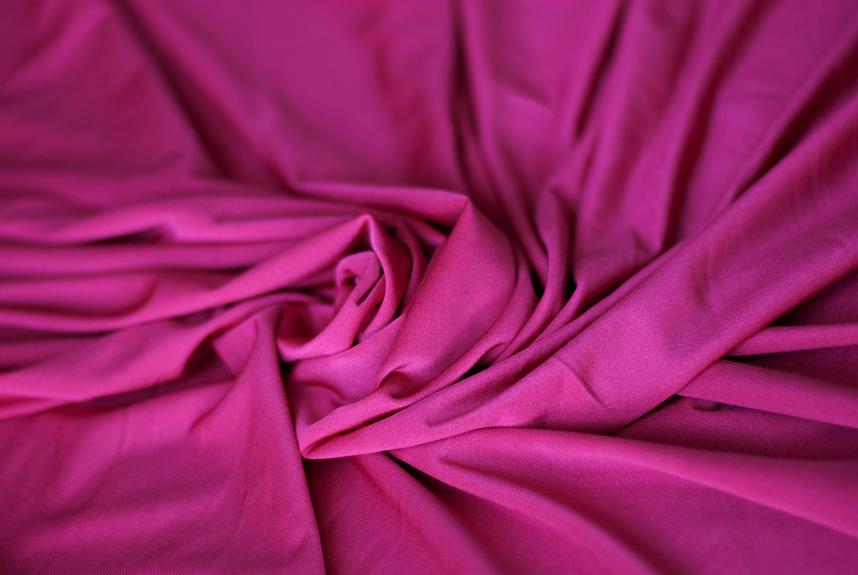When you're choosing between batiste and twill, it's essential to recognize their unique characteristics. Batiste offers a lightweight and soft touch, perfect for delicate garments, while twill boasts durability and structure, making it ideal for more rugged applications. But how do these differences impact your fabric selection for various projects? Understanding the nuances in texture, weight, and care requirements can significantly influence your decision-making process. Let's explore these aspects further to ensure you make the right choice for your next venture.
Table of Contents
Definition of Batiste
Batiste is a lightweight, finely woven fabric often made from cotton or a cotton blend, known for its soft texture and breathable qualities. You'll appreciate its delicate nature, which makes it perfect for garments like blouses, dresses, and even baby clothes. When you wear batiste, you'll notice how comfortable it feels against your skin, especially in warm weather.
One of the standout features of batiste is its sheer quality. You might find it used in layers or as an overlay, adding elegance to your outfits without being overly heavy. It's also a popular choice for lining, providing a smooth finish to your garments.
Batiste comes in various weights, so you can choose the right one for your project. Lighter weights work well for airy summer wear, while heavier options are excellent for slightly more structured designs.
Caring for batiste is straightforward; it's machine washable, but you'll want to use a gentle cycle to maintain its softness. Ironing on low heat helps keep it looking crisp. Overall, batiste offers versatility and comfort, making it a favorite among designers and sewists alike.
Definition of Twill
Twill is a type of fabric characterized by its diagonal weave, which gives it a unique texture and durability.
You'll find it commonly used in various applications, from clothing to upholstery, thanks to its strength and versatility.
Understanding twill's care and maintenance will help you keep your items looking their best for longer.
Fabric Weave Characteristics
Understanding twill's unique weave characteristics reveals its distinctive diagonal pattern, which lends both strength and texture to the fabric. This weave is created by passing the weft thread over one or more warp threads and then under two or more warp threads in a repeated sequence. As a result, you get a fabric that's not only durable but also visually appealing.
Here are some key features of twill fabric:
- Durability: The diagonal weave structure makes twill highly resistant to wear and tear, making it ideal for heavy-duty applications.
- Texture: The diagonal lines create a unique surface feel, adding depth and interest to the fabric.
- Drape: Twill fabrics generally have a good drape, which means they fall gracefully and can be used in various garment styles.
- Stain Resistance: The tightly woven nature of twill often makes it less prone to stains compared to other fabric types, making it easier to maintain.
Common Uses and Applications
When it comes to versatility in fabric choices, twill stands out for its wide range of applications in clothing and home textiles.
You'll find twill fabric in everything from durable workwear to elegant dresses. Its diagonal weave lends strength and a distinctive look, making it ideal for jeans, chinos, and jackets. The fabric's ability to drape well also means you can create stylish skirts and tailored trousers that fit comfortably while maintaining a polished appearance.
In home textiles, twill is equally popular. You can use it for upholstery, curtains, and table linens, thanks to its durability and resistance to wrinkling. The fabric's texture adds depth and warmth to your living space, making it a favorite for both modern and traditional decor.
Even in bedding, twill shines. It provides a cozy feel while being easy to care for, making it perfect for sheets and duvet covers.
Care and Maintenance Tips
Caring for twill fabric properly helps maintain its durability and appearance, ensuring it remains a stylish choice in both clothing and home textiles. To keep your twill items looking their best, follow these care and maintenance tips:
- Wash with Care: Use cold water and a gentle cycle when washing twill. This helps prevent fading and maintains its shape. Avoid bleach, as it can damage the fabric.
- Dry Naturally: Whenever possible, air dry your twill items. If you need to use a dryer, opt for a low heat setting to prevent shrinkage and preserve the fabric's integrity.
- Iron with Caution: If your twill needs ironing, do it on a medium setting, and always iron it inside out. This helps avoid any shine on the fabric's surface.
- Store Properly: When storing twill garments, hang them up or fold them neatly. Avoid overcrowding in your closet to prevent creasing and maintain their shape.
Texture Comparisons
Batiste's smooth, lightweight feel contrasts sharply with twill's heavier, more textured surface. When you touch batiste, you'll notice its silk-like softness, which makes it an excellent choice for garments requiring a delicate, airy drape. This fabric's fine weave allows it to flow gracefully, making it ideal for blouses, dresses, and linings. You'll appreciate how batiste feels cool against your skin, especially in warm weather.
On the other hand, twill has a pronounced diagonal weave that not only gives it more body but also adds depth to its texture. When you run your fingers across twill, you can feel its ridges, contributing to a sturdier, more structured fabric. This texture makes twill a popular choice for items like trousers and jackets, where durability and form are essential.
Both fabrics have their unique textures that cater to different needs. If you're seeking a lightweight, soft touch, batiste is your go-to.
But if you prefer a more robust feel with added texture, twill will serve you well.
Consider your project's requirements carefully to choose the right fabric for your desired aesthetic and functionality.
Weight and Durability
Weight plays a crucial role in determining the durability of batiste and twill, with batiste being considerably lighter and more delicate compared to twill's heavier, more resilient structure. This difference in weight affects how each fabric performs in various applications.
You'll notice that batiste, while soft and airy, can be prone to tearing and fraying, making it less suitable for high-wear items. On the other hand, twill's sturdiness means it can withstand more rigorous use, making it a preferred choice for various projects.
Here are some key points to consider:
- Lighter Weight: Batiste is ideal for delicate garments but lacks durability for frequent use.
- Heavier Weight: Twill offers strength, making it suitable for items that need to endure regular wear.
- Tear Resistance: Twill can resist tearing better than batiste, ensuring longer-lasting items.
- Maintenance: Batiste may require more careful handling and washing, while twill is generally easier to care for.
Understanding these differences can help you make informed choices based on your project needs.
Suitable Projects for Each
When choosing between batiste and twill, think about your project's specific needs.
Batiste's lightweight nature makes it perfect for delicate items like blouses and baby clothes,
while twill's sturdiness suits more robust projects, like trousers and jackets.
Let's explore the ideal uses for each fabric to help you make the right choice.
Ideal Fabric Uses
Considering their unique characteristics, both batiste and twill serve distinct purposes in various sewing projects. You'll want to choose the right fabric based on the project you have in mind.
Batiste, known for its lightweight and sheer qualities, is perfect for delicate items, while twill, with its sturdy diagonal weave, excels in heavier applications.
Here are some ideal fabric uses for each:
- Batiste:
- Baby Clothes: Its softness makes it gentle against a baby's skin.
- Lining for Dresses: Batiste provides a smooth finish and helps with breathability.
- Twill:
- Trousers or Jeans: The durability of twill withstands wear and tear, making it ideal for everyday clothing.
- Jackets or Coats: Twill's structure offers warmth and can handle the elements well.
Recommended Craft Projects
Choosing the right fabric can inspire a variety of craft projects, with batiste and twill each offering unique opportunities for creativity.
If you're drawn to batiste, consider making delicate garments like blouses or summer dresses. Its lightweight nature makes it perfect for lining and creating soft, flowing drapes. You can also craft handkerchiefs or baby clothes, where softness is key.
On the other hand, if you prefer twill, you'll find it's ideal for more structured projects. Think about making tote bags, jackets, or even durable home decor items like cushion covers. Twill's sturdiness lends itself well to projects that require a bit more heft, so consider using it for upholstery or even aprons that need to withstand daily wear.
Both fabrics have distinct textures and weights, so choose based on the project's needs. By understanding the strengths of batiste and twill, you can select the perfect fabric for your next creative endeavor, ensuring your craft projects look professional and stand the test of time.
Happy crafting!
Care and Maintenance Tips
To keep your batiste and twill fabrics looking their best, it's essential to understand their unique care requirements. While both fabrics have their strengths, they also need specific attention to maintain their quality.
- Washing: Always check the care label first. Batiste is usually machine washable on a gentle cycle, while twill can often handle regular cycles. Use cold water to prevent shrinking.
- Drying: Air drying is best for both fabrics. If you must use a dryer, opt for a low heat setting. High heat can damage the lightweight fibers in batiste and cause twill to lose its shape.
- Ironing: Iron batiste on a low setting while it's slightly damp to avoid scorching. Twill can tolerate a higher heat, so use a medium setting and steam for best results.
- Storage: Store your garments in a cool, dry place. Batiste should be folded to avoid creasing, while twill can be hung up. Avoid direct sunlight to prevent fading.
Frequently Asked Questions
How Do Batiste and Twill Compare in Terms of Breathability?
When you compare breathability, batiste typically feels lighter and airier, making it great for warm weather. Twill, on the other hand, offers slightly less breathability due to its denser weave, providing more durability.
Are Batiste and Twill Available in Sustainable Fabric Options?
Yes, you can find both batiste and twill in sustainable fabric options. Many brands now offer eco-friendly materials, so you can enjoy stylish, breathable fabrics while making environmentally conscious choices for your wardrobe.
What Are the Historical Uses of Batiste and Twill Fabrics?
Batiste's often used for delicate garments and linings, while twill's durability suits workwear and upholstery. You'll find batiste in historical dresses and twill in uniforms, showcasing their versatility throughout fashion's evolution.
Can Batiste and Twill Be Dyed or Printed Easily?
Yes, you can dye or print both batiste and twill fabrics easily. Batiste absorbs colors well, while twill's texture enhances patterns. Just make sure to follow the appropriate dyeing techniques for the best results.
Which Fabric Is Better for Outdoor Versus Indoor Projects?
For outdoor projects, you'll want a durable fabric that withstands the elements, so choose a heavier option. For indoor projects, lighter fabrics work well, offering comfort and flexibility for various design aesthetics.
- How Does Ring Spun Cotton Affect Garment Fit and Shape Retention? - August 13, 2024
- What Are the Challenges in Producing Ring Spun Cotton? - August 13, 2024
- Is Ring Spun Cotton Suitable for Plus-Size Clothing? - August 13, 2024







